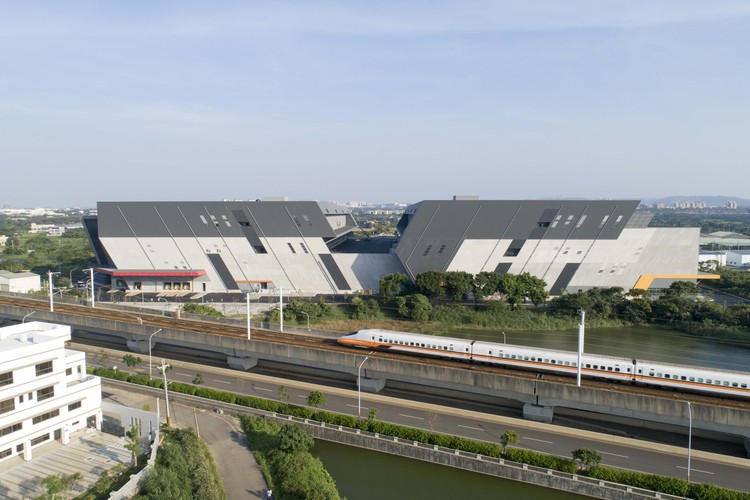Cafe Oriente LABOTORY
2018-06-19 22:00
架构师提供的文本描述。一个空间不仅需要提供美丽的视觉效果,还需要为游客提供一种独特的情感体验,充满细微差别。现在有很多咖啡馆,但我们希望东方咖啡厅能成为一个独特的地方,能引起人们的共鸣,而不仅仅是一个喝咖啡的地方。
Text description provided by the architects. A space needs not only to deliver beautiful visuals but offer a unique emotional experience filled with nuance to visitors. There are numerous cafes these days, but we hope that Cafe Oriente would become a unique place that resonates with people rather than simply being a place to have coffee.
© Yong Joon Choi
(蔡永俊)


“东方咖啡厅”的开头可以追溯到客户的评论:“我想要东方美学的暗示空间。”东方咖啡厅是一家出售韩国传统手工小吃的咖啡馆,这个名字暗示着这一点。该地点位于汉南东一条小巷的尽头,那里曾经有一家电子设备商店。我们想把亚洲的美或韩国的美应用到这个地方。此外,我们希望通过极简主义设计和当代韩国美学相结合来表达情感。
The start of Cafe Oriente goes back to the comment from the client, “I would like the space where oriental aesthetics are implied.” Cafe Oriente is a cafe that sells artisanal traditional snacks of Korea and the name implies that. The location is at the very end of an alley in Hannam-Dong where there used to be an electronics equipment shop. We wanted to apply a touch of Asian beauty or Korean beauty to the place. In addition, we wanted to bring out emotions through a combination of minimalist design and contemporary Korean aesthetics.
© Yong Joon Choi
(蔡永俊)


这位设计师引进了韩国传统住宅的各种元素。“ㄷ”型结构的稳定性,中间有一个庭院,遮阳篷的精致曲线,作为室内和外部桥梁的前地板的可扩展性,庭院带来的宁静,奶油色的传统纸张和木材的温暖,花岗岩的粗糙和坚实的纹理结合在一起,创造了这一独特的空间。
The designer brought in various elements of a traditional Korean house. The stability provided by the ‘ㄷ’ shaped structure with a court in the center, the elaborate curves of the awning, the expandability of the front floor that serves as a bridge between the interior and the exterior, the calmness of the courtyard brought into the house, the warmth of the cream-colored traditional papers and the wood, and the rough and solid texture of granite have been brought together to create this unique space.
© Yong Joon Choi
(蔡永俊)


首先,中间有一个庭院的建筑的“ㄷ”形状的布局来自于传统的汉诺克结构。游客通过这条“ㄷ”形状的流线进入空间,咖啡厅工作的咖啡吧也是“ㄷ”形状。这个形状再次被复制在‘ㄷ’形状的座椅和布局与庭院在中心。这些元素提供了一种稳定的感觉,同时明确区分咖啡师的空间和其他空间,给分离的地方一种独立的感觉。
First, the ‘ㄷ’ shaped layout of the building that has a courtyard in the middle comes from the traditional Hanok structure. Visitors are drawn into the space through this ‘ㄷ’ shaped flow line, and the coffee bar where the barista works is also in the shape of 'ㄷ‘. The shape was replicated again in the ’ㄷ‘ shaped seats and the layout with the courtyard in the center. These elements provide a sense of stability while clearly distinguishing between the space of the barista and other spaces, giving a sense of independence to the separated place.
© Yong Joon Choi
(蔡永俊)


Floor Plan


© Yong Joon Choi
(蔡永俊)


第二,从屋顶到遮阳篷的精细曲线也反映在其他元素中。咖啡师咖啡吧的天花板和进入咖啡厅时从旁边的两面墙壁上碰到的曲线,给咖啡师和他的精力带来了焦点。这就是我们的意图。为了最大限度地利用半地下的位置,我们在天花板结构的拐角处增加了曲线,顾客的视线经常在那里休息。间接照明在天花板结构的外部是用来使天花板看起来更深,就像它是漂浮在半空中。曲线还添加到便携式家具和内置家具。
Second, the elaborate curves from the rooftop to the awning has been reflected in other elements, too. The ceiling of the barista coffee bar and the curves that one is met with from the two walls on the side upon entering the cafe brings the focal point to the barista and his energy. That was our intention. To make the most of the location which was semi-underground, we added curves the corner of the ceiling structure where the gaze of the customers would often rest. Indirect lighting on the exterior of the ceiling structure was used to make the ceiling look deeper and as if it were floating mid-air. Curves were also added to portable furniture and built-in furniture.
© Yong Joon Choi
(蔡永俊)


第三,韩国房屋的前层,哈诺克被用作另一个元素。前一层,在韩语中被称为“Twet Maru”,用于拓展空间,连接传统的韩国房屋的外部和内部。这是位于座位区的顾客,因此,即使咖啡厅是半地下,空间有一种可扩展的感觉。为了改变在Ttwet Maru下可以感觉到的黑暗形象,在观景下设计了一个小花园,这样面对彼此的顾客也会感到舒服。
Third, the front floor of Korean houses, Hanok was used as another element. The front floor, called “Twet Maru” in Korean, serves to expand space and link the exterior and the interior in traditional Korean houses. This was located in the seating area for customers so that even though the cafe is semi-underground, the space had a sense of expandability. To change the dark image that could be felt under the Twet Maru, a small garden was styled under the seeats so that the customers who would be facing each other would feel comfortable, too.
© Yong Joon Choi
(蔡永俊)


第四,以哈诺克的各种纹理为元素。天然木材被用于咖啡吧,咖啡店的墙壁和家具,以增加温暖。传统韩国纸的奶油色为天花板增添了更多的温暖。时间流逝的气味和痕迹,以及传统汉诺克的墙壁和地板的粗糙和寒冷,使人们产生了强烈的反差。这些不同材料的结合创造了一个新的形象,激励用户。
Fourth, the various textures of Hanok were used as elements. Natural wood was used to the coffee bar, the walls of the barista zone and the furniture to add warmth. The cream color of traditional Korean paper added further warmth to the ceiling. A strong contrast was brought out by the smells and traces of time gone by, and the rough and coldness of the walls and the floor from the traditional Hanok. The combination of such different materials created a new image that inspires users.
© Yong Joon Choi
(蔡永俊)


正如圣埃克斯伯里曾经说过的那样,“完成并不意味着不需要添加任何东西,而是不需要扔掉任何东西”,通过将韩国传统美学与当代极简主义相结合,东方咖啡厅是一个极小的空间,为用户和游客提供了一种精致的细微差别感。
As Saint-Exupery once said, “Being complete is not being in a state where nothing needs to be added but a state where nothing needs to be thrown out”, Cafe Oriente is a minimal space that provides a refined sense of nuance to users and visitors, by combining traditional Korean aesthetics with contemporary minimalism.
© Yong Joon Choi
(蔡永俊)






















































Architects LABOTORY
Location 682-16 Hannam-dong, Yongsan-gu, Seoul, South Korea
Area 58.0 m2
Project Year 2018
Photographs Yong Joon Choi
Category Coffee Shop
























